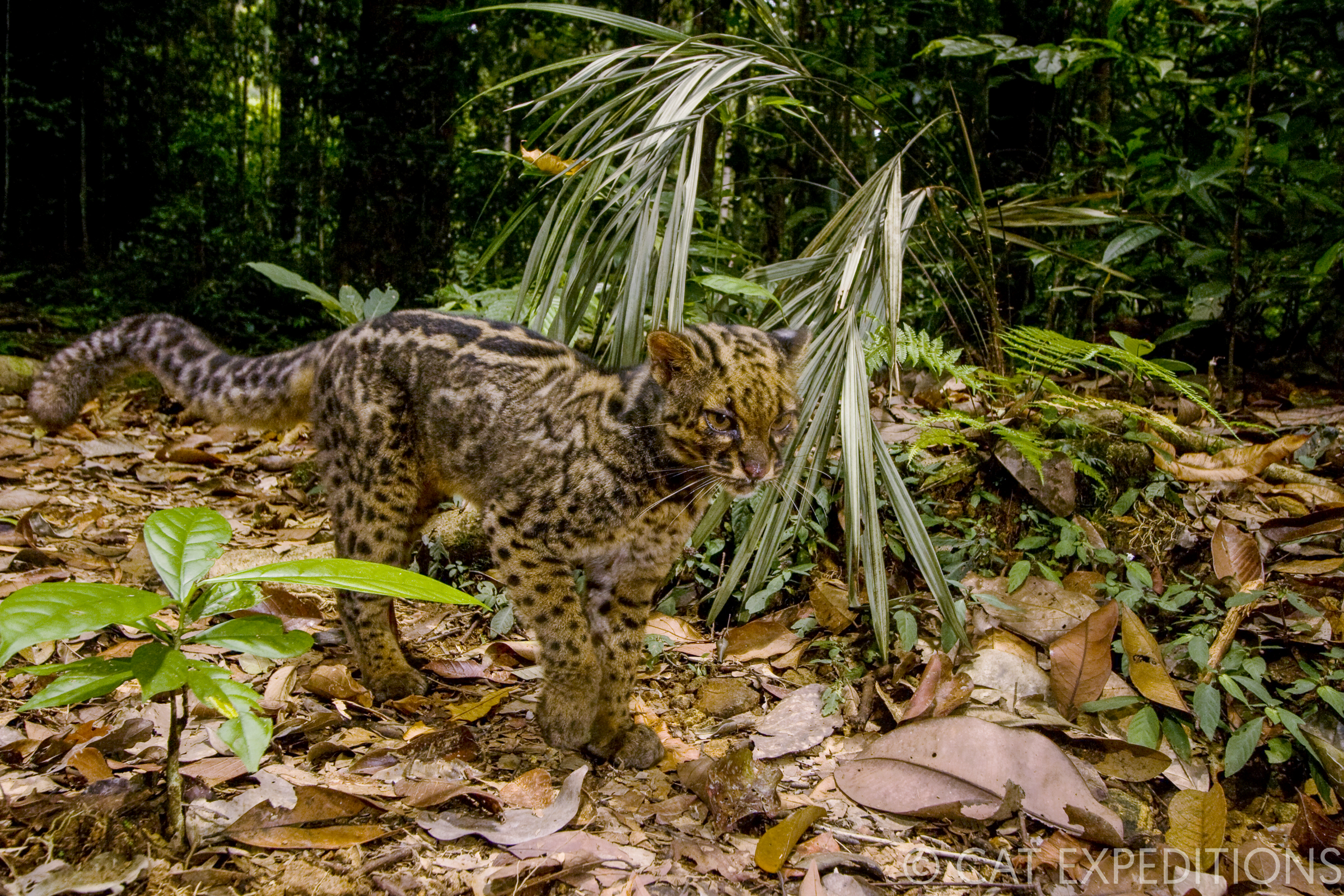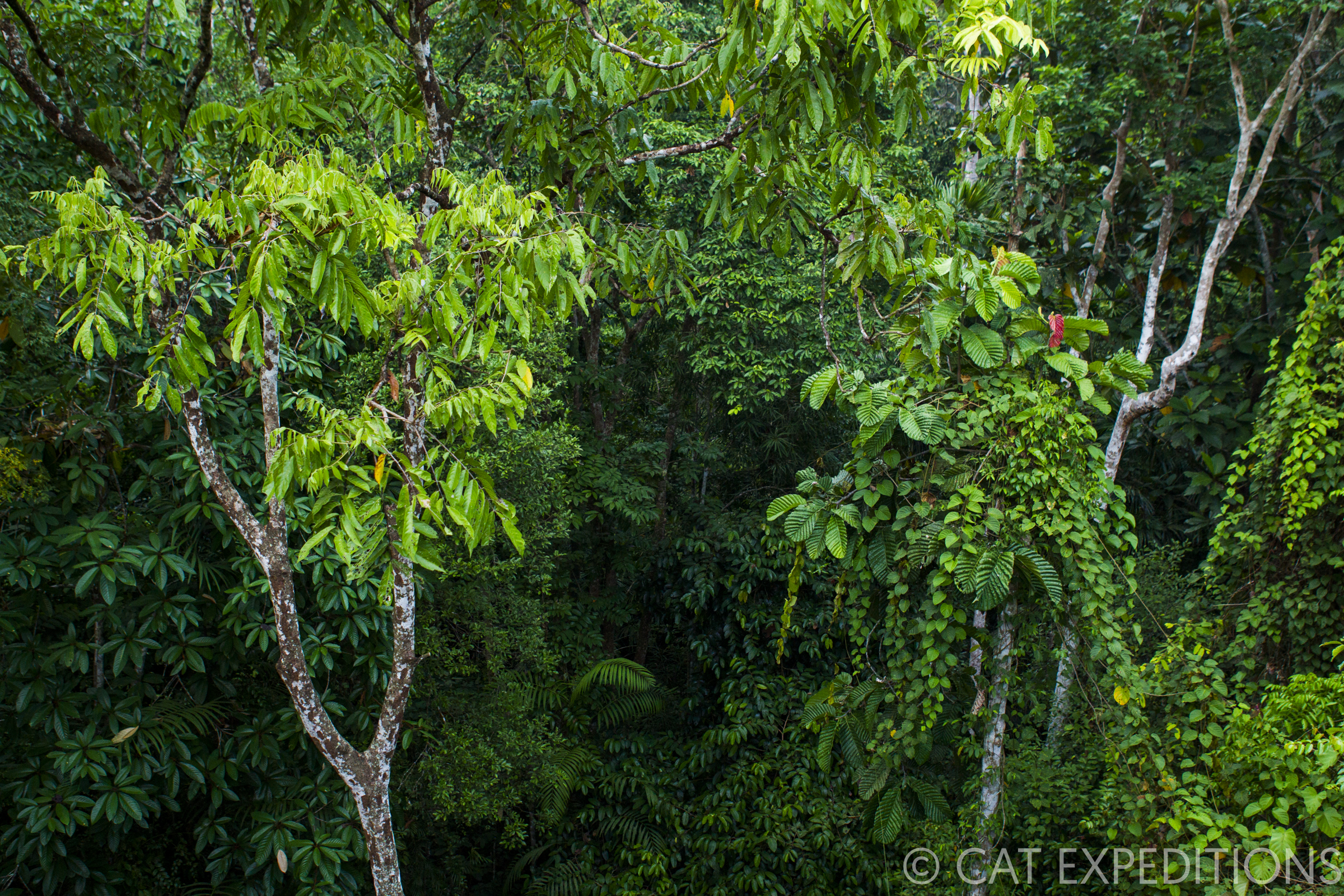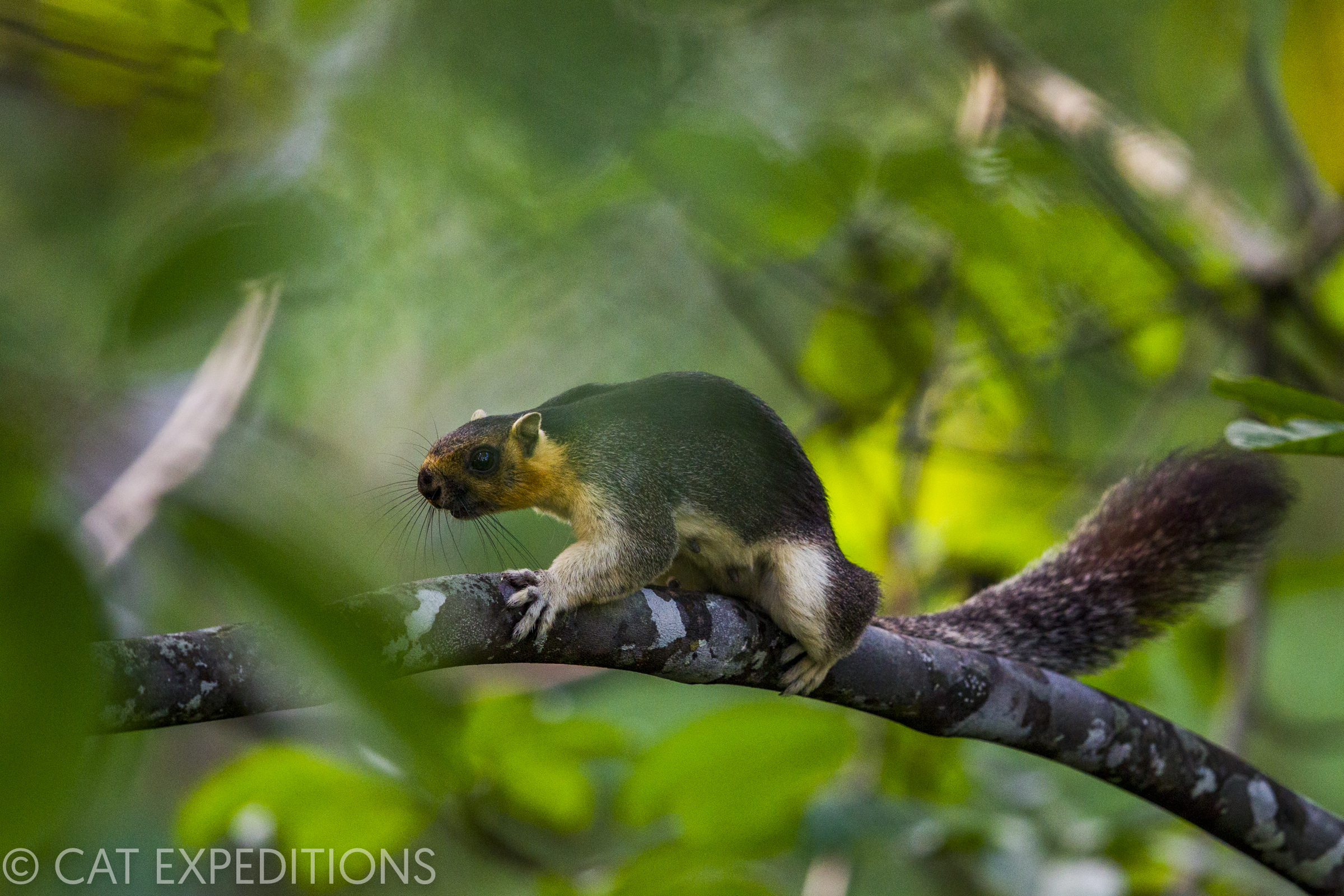Marbled Cat
MARBLED CAT (Pardofelis marmorata)
The marbled cat has the longest tail in relation to its body length out of any wild cat, making it extremely well adapted for climbing trees. They probably do most of their hunting above ground even being able to descend down trees head first. The marbled cats in Borneo may in the future even be considered a separate species from the marbled cats found more north.
Difficulty: Very Difficult
Marbled Cat Description
Marbled cats are the height of a domestic cat, but are significantly longer, mostly due to its very long tail, which is as long as the rest of its body, and sometimes even longer. Their weight is similar to that of a domestic cat at up to 5kg (11 lbs). It has a small, rounded head with rounded ears. Like the cats tail, its large paws aid it while climbing through the tree canopy. Its coat pattern is similar to that of the Sunda clouded leopard with slightly more solid spotting. When walking the cat often looks like it is hunched over, with its back higher in the air than the rest of its body.
The long tail and slightly arched posture of marbled cats is perfectly exemplified by this beautiful cat in Borneo
Marbled Cat Distribution and Habitat
Marbled cats can move through Borneo's jungle canopy with extreme ease.
Marbled Cat Feeding Biology
Arboreal mammals like this cream-colored giant squirrel are prey items for marbled cats
Marbled Cat Social Organization and Reproduction
There is almost nothing known about marbled cats social ecology. They are presumed to be solitary and territorial, but since they are so hard to study we really do not know. We don’t even know what their densities are like, but it is suspected they occur at low densities. Borneo however, where we run our tour, might have some of the highest densities or marbled cats based on limited camera trap data.
Also very little is known about the reproduction of marbled cats. What we do know about it, comes from a few captive individuals. Mating probably takes place at any time of year due to their very tropical distribution. In captivity, litter size was two kittens. Sexual maturity happens at around twenty-one months for females. We do not know how long marbled cats live but in captivity they live until around 12 years of age.


